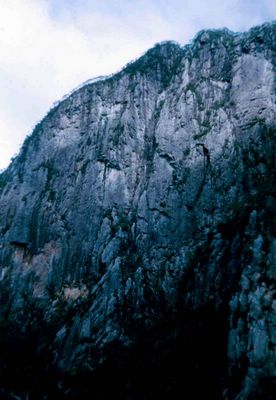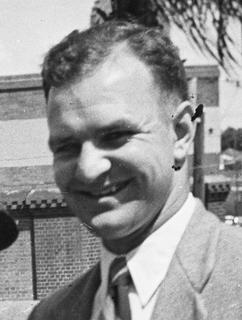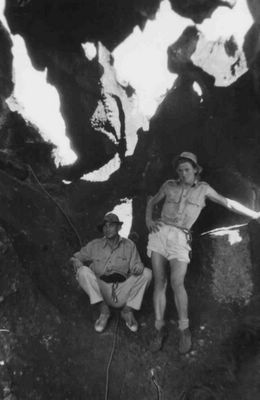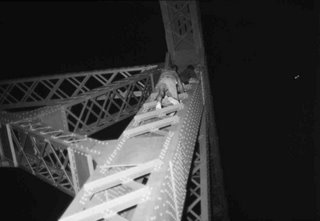
Ron Cox had emerged as a dominant figure in the Queensland (and Australian) climbing scene and always saw his activities as part of a bigger picture. In August 1960, he set off with Pat Conaghan, Peter Reimann and Basil Yule to attempt the first winter ascent of Mt Geryon in Tasmania’s Central Reserve. It was a bold move and Cox’s laconic style captures the essence of how they came to be there:
They’d never climbed snow before. Their only knowledge of the art came from text-books…They started up the face, climbing on high angle snow, kicking steps and using their axes as an aid to balance. For safety’s sake, they belayed as in rock climbing, except that their belay anchors were axe shafts driven deep in the snow. As they climbed, they learned.
The team split up with Reimann and Yule completing the first winter circuit of the Ducane Range from the Labyrinth to Falling Mountain. Cox and Conaghan decided on an audacious attempt to traverse Geryon’s four peaks from north to south. No one had done this before, even in summer. They climbed Geryon’s North Peak again, bivouacking in a snow cave near the summit. But the weather closed in, as Cox writes:
The thick mist and freezing conditions, added to the immense technical difficulties of this winter climb, were more than enough to scare the usually optimistic duo into retreat. Descending the mountain, they narrowly averted disaster when Cox, climbing down a steep couloir of snow and ice too quickly and too carelessly, slipped and fell 150 feet. Conaghan held him on an ice axe belay. Had the belay gone, they would have fallen over a thousand feet down the western face.
Their first experience on snow and ice did nothing but whet their appetite. Although they failed to traverse the mountain, they had made the first winter ascent of Geryon’s North Peak—climbing it twice. Later that year, they made the first full ascent of the Bowie Ridge on Mt Cook with Cox making the summit of New Zealand’s highest peak twice in his first season. It was an extraordinary transformation. Cox and Conaghan returned to Geryon in the sweltering summer of 1961 to make the first traverse of all of Geryon’s peaks. Within four years, Cox and Reiman would be climbing in the Alps, Cox moving to Grenoble in France to work. He is still living there today, now retired. Conaghan has since travelled the world, visiting various remote regions in his capacity as a geologist. Hardy, too, felt the call of the bigger mountains and eventually went on to climb in the Himalayas, the Andes, Canada, Switzerland, Czechoslovakia and Africa with his wife, Margaret. ‘On my first climb,’ Hardy recalls, ‘I knew it was what I wanted to do.’ It was an extraordinary era, defined by an extraordinary cohort of adventurers, all emerging from the University of Queensland Bushwalking Club.
Picture: (from left) Peter Reimann, Basil Yule and Ron Cox in Tasmania, 1960. Pat Conaghan collection.







